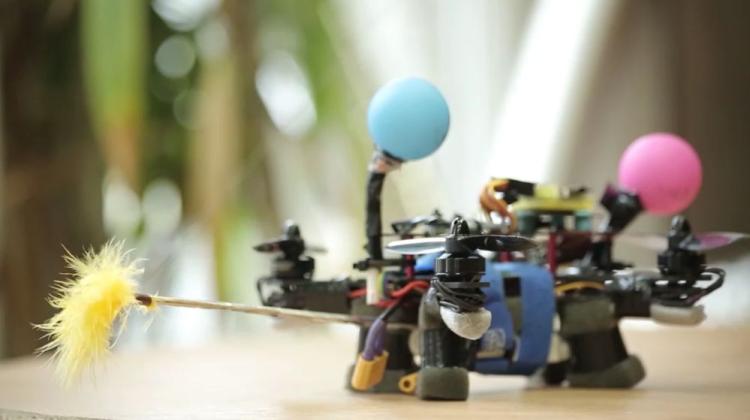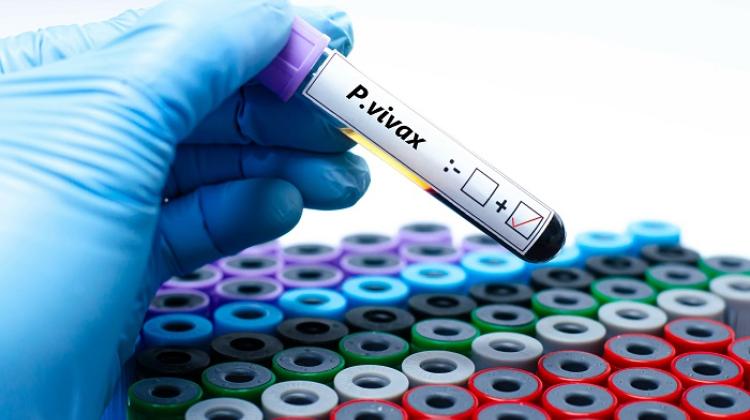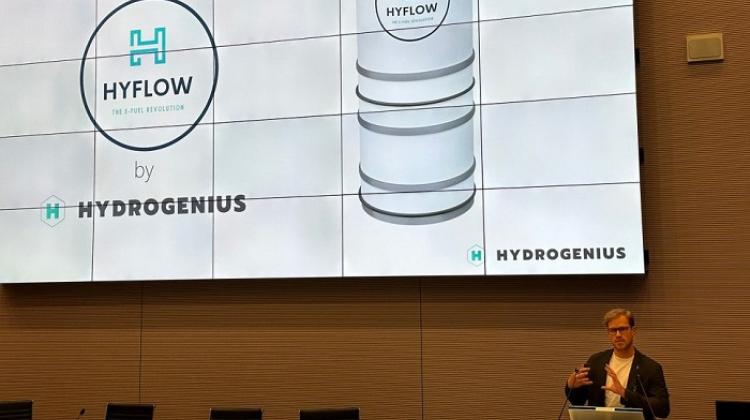Flying pollinator robot built in Warsaw laboratory

B-Droid does not collect nectar or make honey, so it is not exactly a robobee. But it is the world\'s first autonomous flying device that can pollinate plants - said in an interview with PAP the inventor if the robot, Dr. Rafał Dalewski from Warsaw University of Technology.
When a few years ago, Dr. Rafał Dalewski from the Faculty of Aeronautical Engineering, Warsaw University of Technology received a grant for the construction of an autonomic system for pollinating plants, not everyone believed that he would succeed. The scientist showed, however, that his idea is not fantasy - it is feasible. Together with his team he built probably the world\'s first prototype of a flying machine that pollinates flowers.
Autonomous pollinator from Warsaw University of Technology is a converted small commercial drone. But Dr. Dalewski does not his design to be associated with the term "drone", which also means a male bee. Nature\'s drones do not pollinate flowers and - at least in the Polish culture - they are synonymous with loafers. Dr. Dalewski decided to name his device B-droid. To use this name, he had to obtain the consent of the creators of "Star Wars", who have a monopoly on commercial use of the word "droid". Fortunately, they had nothing against naming Polish pollinating devices with that word.
B-Droid - although it looks like a rebuilt quadrocopter - is controlled differently than popular toys. "This device is not controlled with a hand controller, it is controlled automatically by a computer" - said Dr. Dalewski. He added that users can only watch with interest as the B-Droid finds a flower, approaches it avoiding obstacles, hovers in the air to collect pollen and flies away from the plant. The observer has only one button that allows to stop the system.
Dr. Dalewski admits that programming the device control was a big challenge. "The quadrocopter is observed from the outside by cameras" - described the scientist. He explained that the cameras are connected to a computer that analyses the image. The cameras register the location of the flowers and the drone. They follow two luminescent balls on the device - pink at the front of the device, blue at the back. The computer calculates the flight path of B-droid to reach the flower, how it should collect pollen and how to move it to another flower. These commands are sent to the machine.
"For now we tested the robot in the laboratory on artificial flowers, in the summer we will do tests in natural conditions" - sais Dr. Dalewski. He admitted, however, that B-Droid is only a prototype. It still needs a lot of work before it can be marketed.
For now, the older brother of the unit - riding B-Droid has a better chance of commercialisation. In the spring of this year the team from Warsaw University of Technology carried out field tests of the device - on the cultivation of strawberries and garlic.
"Comparison with bees is justified, after all we pollinate, which is what bees do. On the other hand, we do not collect nectar or make honey" - laughed the researcher. But he noted: "In our work we do not want to compete with nature and with bees". He said that the main objective of the project was to prepare the device that would work in places where pollination is difficult, for example where there aren\'t enough insects, or no insects at all. In addition, the B-droids can be useful where precision pollination is needed - where pollen has to be moved from a specific flower to another specific flower. B-Droid project is carried out in the program Lider of the National Centre for Research and Development.
PAP - Science and Scholarship in Poland, Ludwika Tomala
lt/ agt/ mrt/
tr. RL
Przed dodaniem komentarza prosimy o zapoznanie z Regulaminem forum serwisu Nauka w Polsce.

















